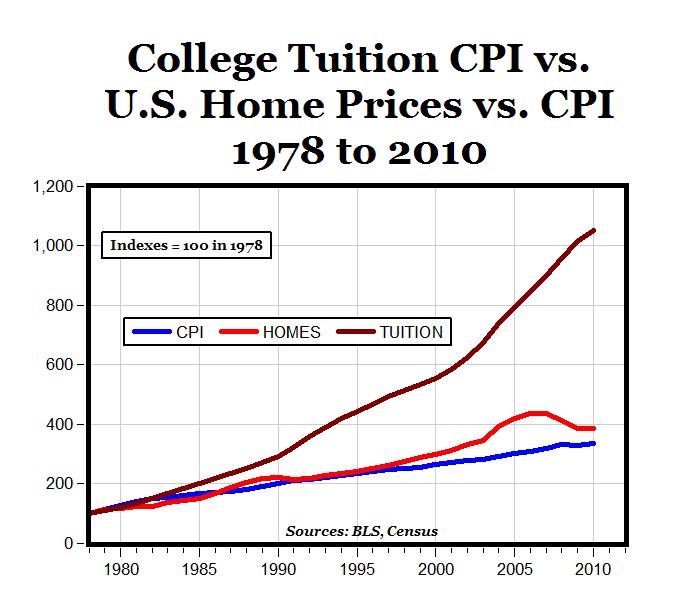Higher-education bubble
Table 1: U.S. housing price index vs. U.S. higher education tuition
My latest article on higher education budget cuts and financing shows that 1) the budget cuts have been smaller than advertised (10 percent rather than 30 to 50 percent), 2) smaller than the dramatic growth in revenue in the preceding 17 years (at least) and 3) financing is being crowded out by declining state revenues and new spending priorities (like ObamaCare).
A previous article highlighted how Nevada's universities use new revenue to hire highly paid non-educators (read: administrators) and luxurious ameneties for students (nicer dorms, better cafeterias, massive gymnasiums). UNLV, for example, actually decreased the number of educators while increasing the number of administrators.
So even though Nevada's universities are mispending scarce resources on non-educators they are facing a tougher financial time than they're used to; but that doesn't mean we should hand over more tax dollars or dramatically increase tuition and fees on students.
Just looking at the last 10 years alone shows a large spike in tuition and fees for higher education. From the 2000-01 school year to 2009-10, UNLV's and UNR's published tuition and fees increased 73.9 percent and 64 percent, respectivly (inflation-adjusted). The most dramatic jump has been in student fees.
Note: total price includes tuition, fees, books, supplies and the cost of living on campus.
Table 2: Inflation adjusted price increase in Nevada higher education from 2000 to 2010.

Worse still, tuition and fees continue to rise. Even though the Consumer Price Index fell by 0.4 percent between 2008 and 2009 and has only grown 1.76 percent since last year, the Nevada System of Higher Education Board of Regents approved a statewide 5 percent increase in undergraduate tuitions. The hyperinflation in higher education is simply unsustainable.
This rapid increase in revenue has not increased the quality of either UNR or UNLV. No student is learning 60 to 70 percent more, even though students are paying 60 to 70 percent more in tuition and fees than students from just 10 years ago.
Both universities must learn to live within their means while providing a higher-quality service at a reasonable (and probablay lower) cost/price. If we don't fix the problem now, then the higher-education bubble burst will - and the situation will be even more painful then.





